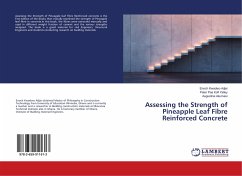In many cases, microbial growth in buildings
involves local, situational, and sometimes
idiosyncratic aspects of a building during its
operation. These unexpected behaviors cannot be
captured by current deterministic performance
evaluation methods. Hence, a new probabilistic
performance indicator for mold growth risk is
developed by treating mold as a risk and a limit
state phenomenon.
This new approach requires a reliable aggregation
method to arrive at quantified mold growth risk and
the extension of standard simulation capacity to
account for additional mechanisms of the mold
phenomenon. It also implicates uncertainty in
building parameters, including natural variation of
hygrothermal properties in building materials,
deviation between as-designed values, and the
actual in-use values of the parameters.
This new approach is capable of explaining
unexpected and non-deterministic mold growth
occurrences. Moreover, it identifies the parameters
that have dominant effects on the increase in mold
risk.
involves local, situational, and sometimes
idiosyncratic aspects of a building during its
operation. These unexpected behaviors cannot be
captured by current deterministic performance
evaluation methods. Hence, a new probabilistic
performance indicator for mold growth risk is
developed by treating mold as a risk and a limit
state phenomenon.
This new approach requires a reliable aggregation
method to arrive at quantified mold growth risk and
the extension of standard simulation capacity to
account for additional mechanisms of the mold
phenomenon. It also implicates uncertainty in
building parameters, including natural variation of
hygrothermal properties in building materials,
deviation between as-designed values, and the
actual in-use values of the parameters.
This new approach is capable of explaining
unexpected and non-deterministic mold growth
occurrences. Moreover, it identifies the parameters
that have dominant effects on the increase in mold
risk.








